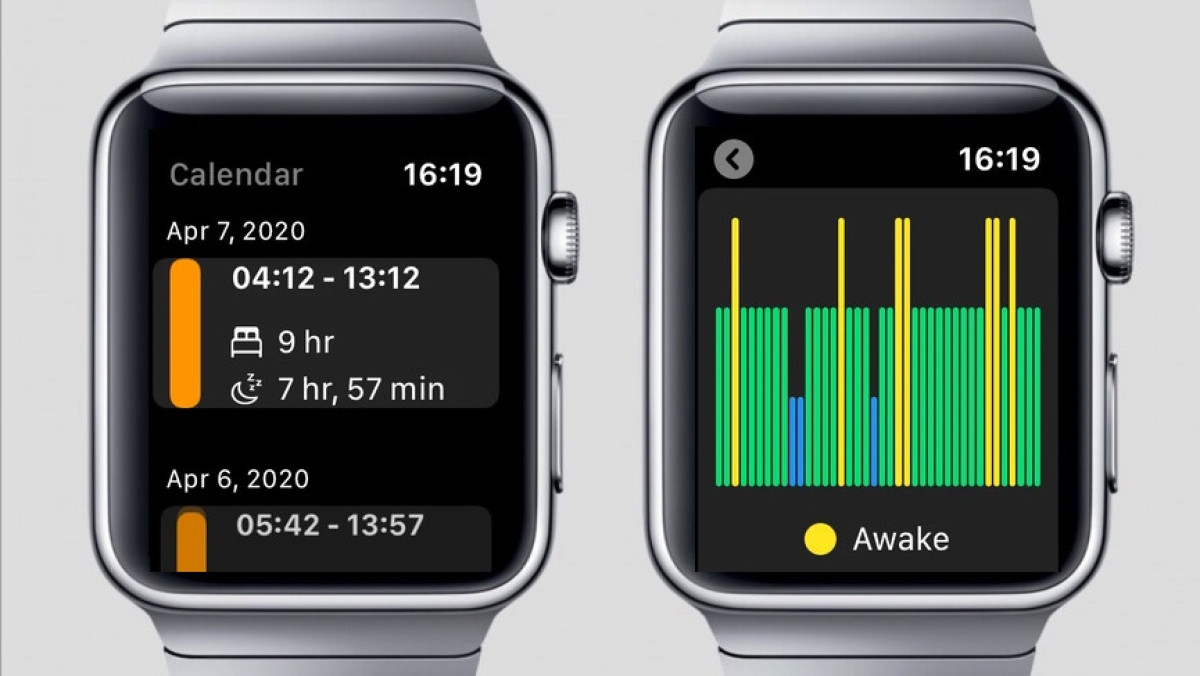
The Apple Watch is now a powerful sleep-tracking tool – and its built-in capabilities are now much improved.
But the beauty of the Apple Watch is that there's a rich ecosystem of third-party apps, which expand the feature set beyond the standard watchOS experience.
If you're looking for an Apple Watch app to track your sleep and give you richer, more insightful stats, we've picked out the ones we think you should be sleeping with.
- Best Apple Watch running apps
- Best Apple Watch golf apps
- Best Apple Watch cycling apps
- Best workout apps for Apple Watch users
Apple Watch Sleep app
Wareable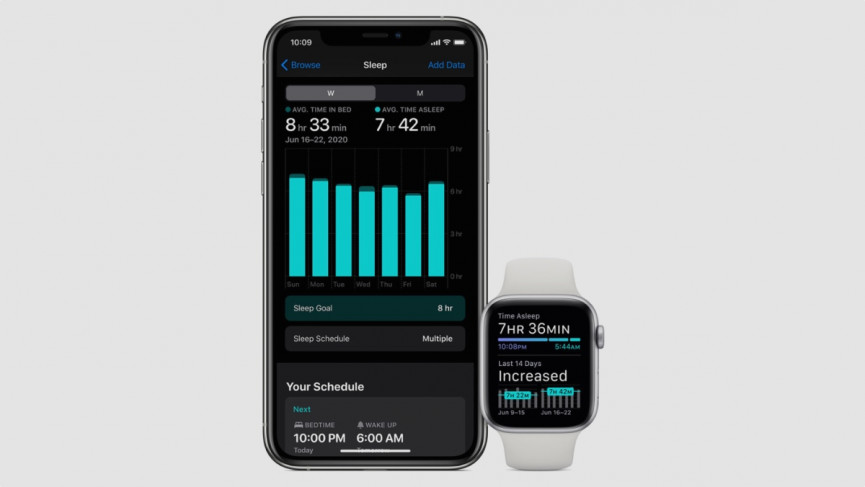
It would be remiss not to start this guide by mentioning the built-in Apple Watch sleep tracking feature.
In watchOS 9 it was updated to offer details on sleep cycles, such as time spent in deep, REM, and light stages.
But the focus of the Apple Watch's native sleep tracking is on consistency and sleep hygiene, rather than hours slept against an 8-hour goal. It's about setting constant bedtime and wake-ups, which can build better sleep habits. This is smarter than simply demanding a solid 8 hours – which can be hard to achieve for those with busy lives.
We've tested against the Fitbit Sense and Withings Sleep Analyzer and found the Apple Watch to be one of the most accurate trackers in terms of sleep duration.
As mentioned, a big part of the on-watch experience will also rate your consistency. You will see whether this increased, decreased, or remained consistent over the past 14 days.
You'll also see a handy chart showing your sleep duration across the past two weeks, which is a good visual indicator of how long you're sleeping.
Wareable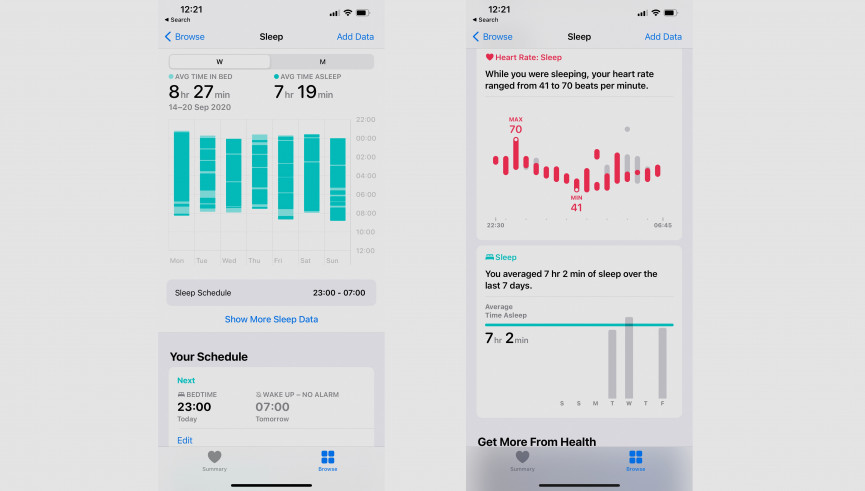
You can see more data in the Apple Health app (as seen above). This will show your bedtimes and wake times, in an attempt to display consistency. You can also see a breakdown of heart rate and blood oxygen during sleep as well.
This is some of the most important and fascinating data – but like much of what the Apple Watch does, it's a little hidden, and requires more interpretation by the user, compared to the sleep scores provided by the likes of Fitbit and Whoop.
AutoSleep
$3.99/£2.99 | Download AutoSleep
Wareable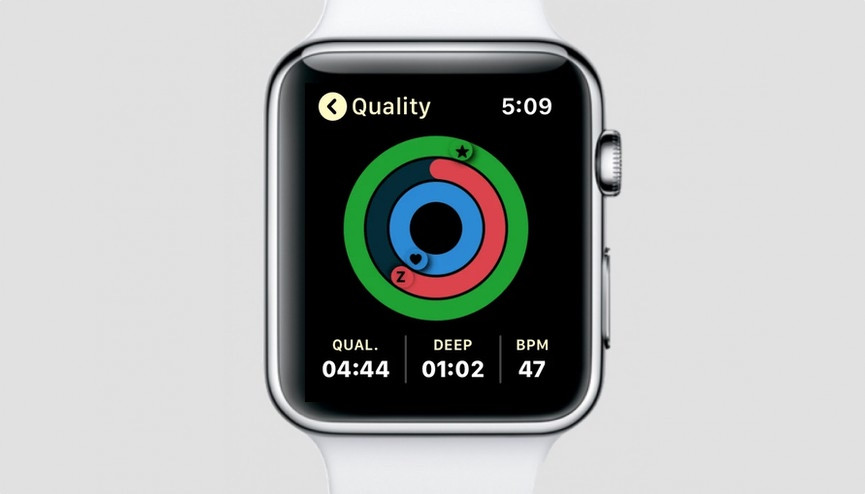
AutoSleep is our favorite of the third-party Apple Watch sleep apps, as it stands.
As the name suggests, AutoSleep's key feature is that it works automatically, unlike some sleep tracker apps that require you to tell them when you're getting into bed.
AutoSleep takes the thinking out of the process, but it's also good when it comes to accuracy. When put up against a dedicated sleep tracker, it produced close results, but you can tweak the sensitivity for better accuracy.
If your Apple Watch dies during the night or you get squiffy results, you can easily discount a night from the results to stop it from mucking up your averages, which is nice.
Users of the Apple Watch will feel immediately at home, and Autosleep apes the Activity Rings you'll find on your smartwatch.
We were impressed generally with the sleep and wake-up times from the automatic tracking, which even expensive dedicated sleep trackers can often get wrong.
Wareable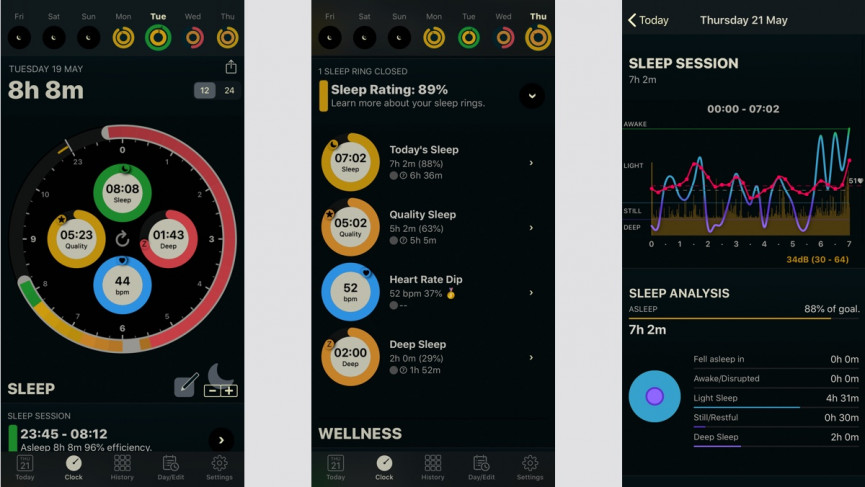
Among the stats are sleep duration, a sleep rating (not provided by the native sleep tracking app), and a readiness score. It will also report the amount of deep sleep and keep tabs on your nightly heart rate.
We did find that deep sleep recorded higher than Fitbit or Withings – and then Autosleep was a little generous with our sleep quality.
It's better suited to those looking to get that 8 hours a night and create good habits than get granular about sleep science.
We also liked the Sleep Bank, which keeps tabs on your week's sleep, and tells you whether your accumulated rest is above or below your goal.
That makes it useful for catching up on rest if you had a bad night, or allowing you an extra hour in front of the TV on the weekend.
AutoSleep also excels in terms of tracking bedtime consistency, which is one of the key factors in improving your rest.
Pillow
Free (in-app purchase for premium) | Download Pillow
Wareable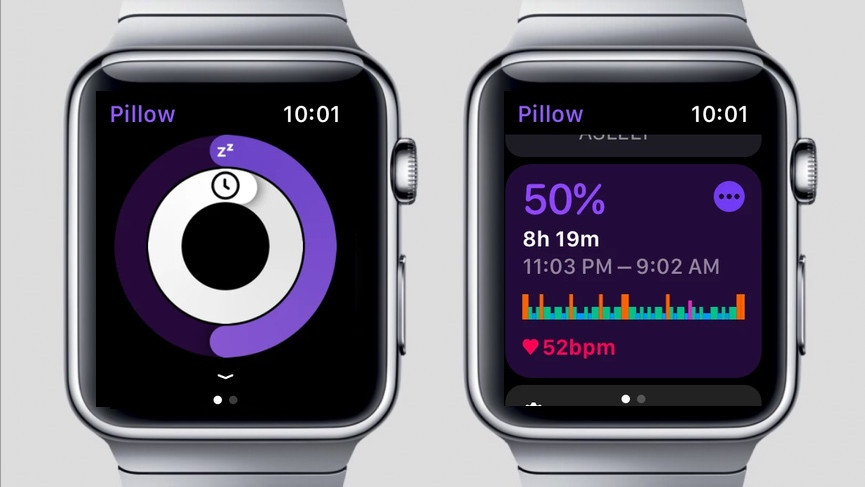
The first thing that struck us about Pillow was the vibrant and engaging design – and it's not a bad little sleep tracker, either.
To get the most out of the app you'll want an annual premium subscription (or $4.99/£4.99 per month).
It uses a combination of movement, sounds, and heart rate to follow your patterns, and presents the data in clear, easy-to-read charts.
The graphs are detailed and engaging, with more of a focus on sleep stages than Autosleep.
Pillow tracks deep, REM, and light sleep, time in bed, and crucially, the time slept – which many trackers overlook. It then will deliver a sleep quality score and track your heart rate through the night.
Wareable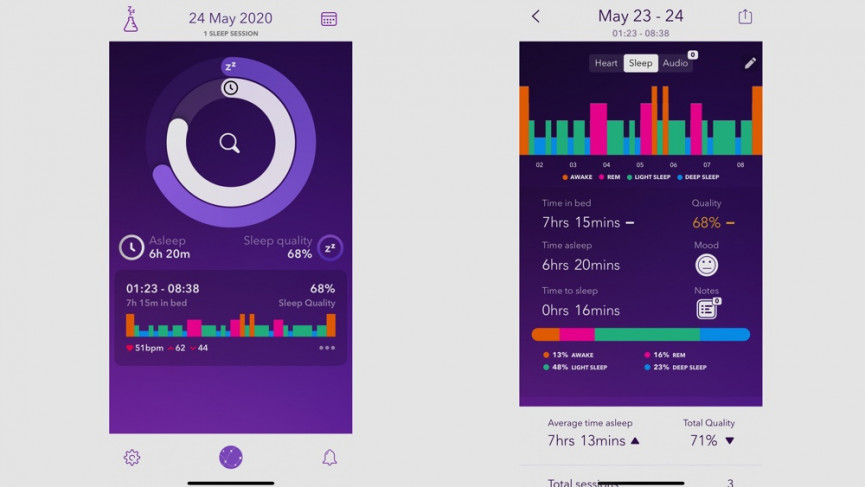
It now also automatically tracks your sleep, letting you see your sleep reports and analysis when you wake up, including sleep breakdown and stats - like time spent in bed.
Premium users also get access to the Sleep Lab, which offers all kinds of insights into your sleep profile. That also lets you pick from melodies to wake up to and see additional analysis on sleeping heart rate.
It's a much more feature-packed experience than Apple's own, but you will have to pay extra for those richer insights if you want them.
Sleep++
Free: Download Sleep++
Wareable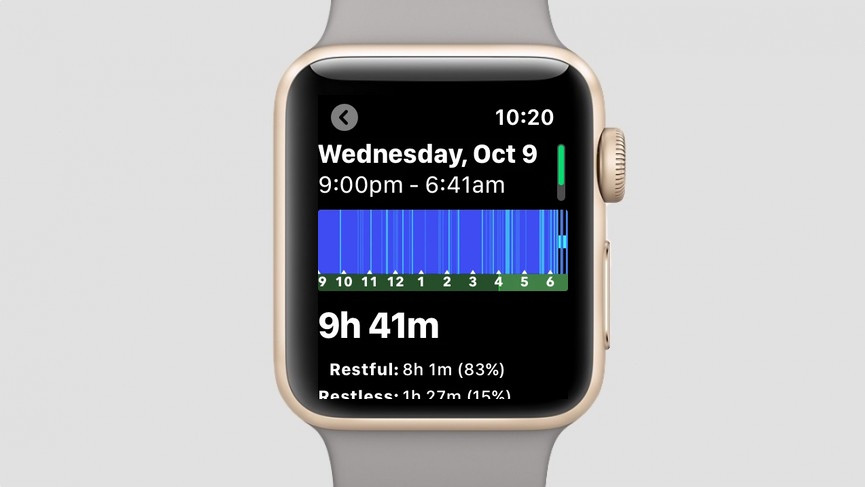
Sleep++ is one of the most popular Watch sleep apps on the App Store, with one of its biggest selling points being its simplicity. It's a free app that does offer some additional in-app purchases to remove advertising.
The app is a little bare-boned, showing you a start button, a stop button, and a little blue chart to display your sleep patterns. It will track automatically, and you can quickly make adjustments if you need to.
Like AutoSleep, it can also write your sleep data to Apple Health and will automatically log sleep when activated on the companion iPhone app.
And a new update has added respiratory rate data into the app, too.
We found Sleep++ to be too simplistic, and it doesn't compare to the data you'll get from a Fitbit or Withings sleep tracker.
Wareable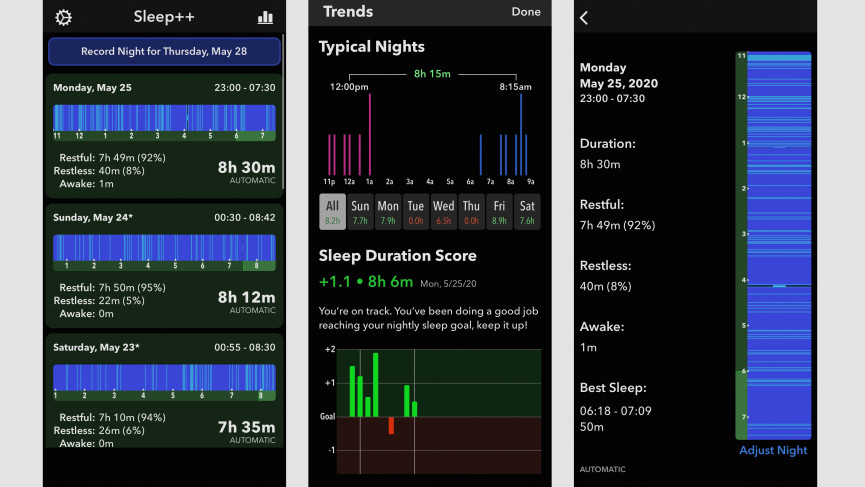
The graph isn't hugely insightful in terms of sleep stages, and the presentation isn't great. You do get some top-line stats, which as duration, restful, restless time awake, and the period of the best sleep.
However, we found the data to be a little rose-tinted, and the accuracy of true sleep quality didn't compare to the likes of Autosleep or Pillow.
One thing we did enjoy from Sleep++ was the long-term trend data, and this is presented nicely.
You can see your typical night's sleep duration and it will spit out a bedtime consistency score.
As we've said, getting to bed and waking up at the same time every day promotes better quality sleep, so for a basic app, this is a really useful metric to focus on.
Sleep Watch
Free: Download Sleep Watch
Wareable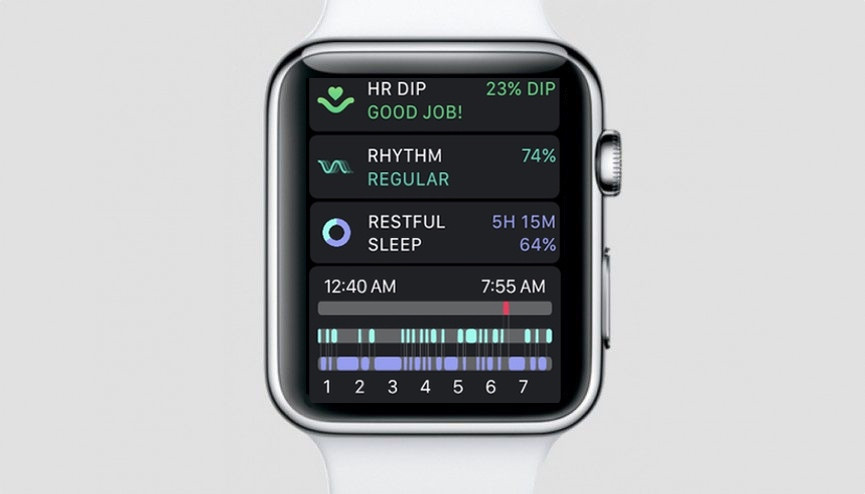
Another on-watch app for tracking bedtime slumber, Sleep Watch automatically keeps tabs on the time, heart rate, and stages of your sleep.
It looks for dips in your heart rate that the makers suggest correlate with more restful sleep and will give you a score based on the quality of your nighttime hours.
You'll also get daily briefings and sleep trends over time, making it a powerful app for Apple Watch users, with even more advanced tracking options, like heart rate variability, and sleep dip, most of which are explained fully when you take out a premium subscription.
For Apple Watch Series Series 6 and later users, it's also added the ability to view your blood oxygen data during sleep here too.
Wareable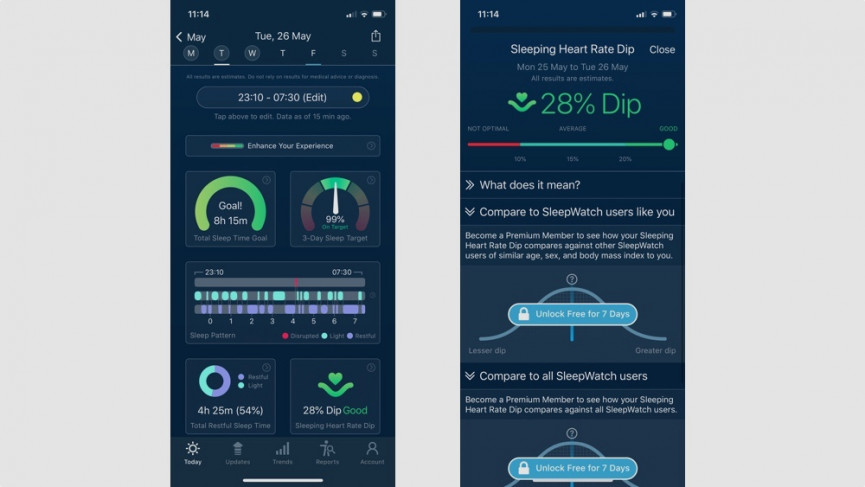
Many of the reports are behind the paywall, which costs $4.99/£4.99 a month or $29.99/£29.99 a year.
Sleep is ranked as disrupted, light, or restful, which we assume is deep and REM combined. It offers a percentage that you can work to improve.
So there's plenty of good actionable data, it's just not presented as clearly as Pillow. There's also tons of data on HRV, and heart rate which is great if you want to get scientific, but there's an element of data overload.
We'd still argue that sleep here isn't judged as harshly as Fitbit and Withings sleep data - and a disrupted night's sleep that only scored 65%-70% on those apps was awarded 94% of our sleep goal in Sleep Watch.
Sleep Cycle
Free (premium for extra analysis features) | Download Sleep Cycle
Wareable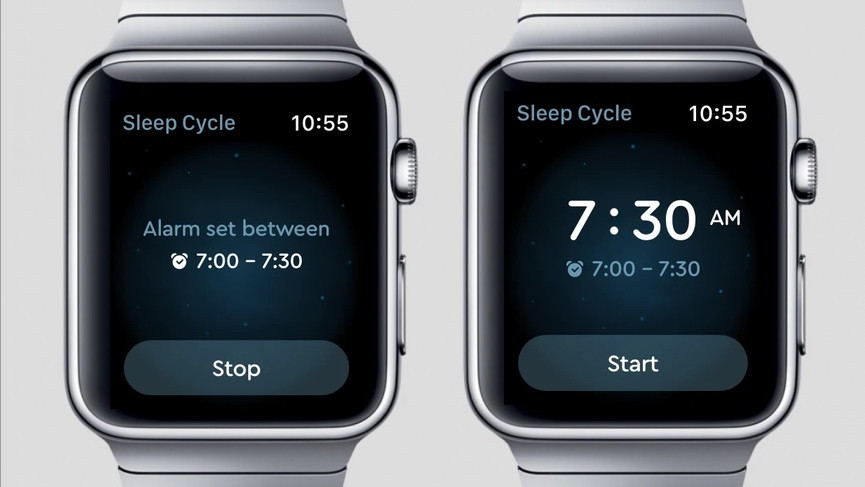
A different take on a sleep tracking app, Sleep Cycle puts the focus on waking up, rather than time spent asleep.
It aims to bring the smart alarm feature found on many fitness trackers to the Apple Watch, which wakes you up at a lighter stage in your sleep cycle, making for a much gentler morning.
You set an alarm range, rather than a single time, and when Sleep Cycle deems you in a ready state, it will gently buzz. if it doesn't, you just get woken up at the end of the time range.
You can also snooze from the wrist, or take advantage of an intelligent snooze feature that lets you have a few extra minutes in bed.
If your sleep issues are more about waking up than drifting off, Sleep Cycle is well worth a try.
You also get access to sleep analysis and tracking, which keep tabs on sleep stages and quality, and the graphs are nicely presented.
Premium ($29.99/£29.99) also offers insights on trends, snore detection, sleep sounds, and even a notes system that aims to help you correlate behaviors that affect sleep.
HeartWatch
$2.99/£2.99: Download HeartWatch
Wareable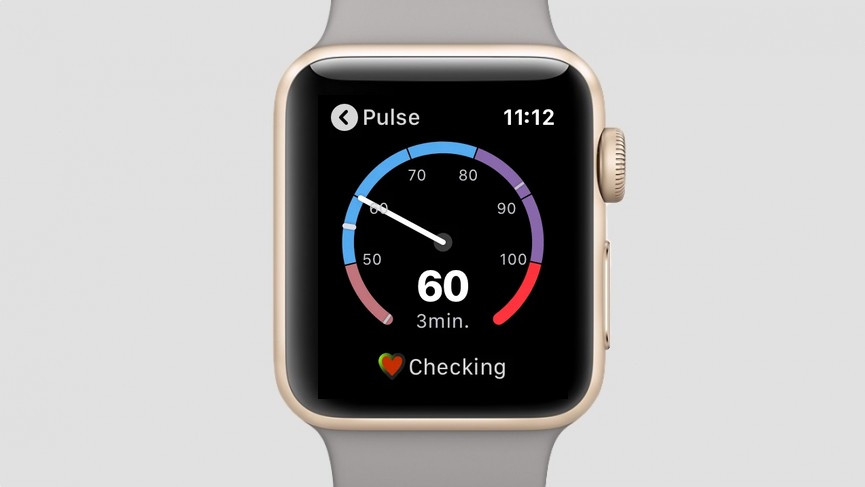
HeartWatch is a neat app that digs into your heart rate data and provides alerts if it notices any unusual, potentially concerning activity. It also works nicely in combination with AutoSleep, which we mentioned earlier.
It tracks your sleep, overlaying the HR data on top, so you can see your waking and sleeping heartbeat, and how they compare to your regular beats.
The iPhone app could do with being a little less cluttered, but, if you're particularly interested in the relationship between your heart rate and sleep, this is a great little app. We've found its accuracy to be good.
Sleep Pulse 3
$3.99/£3.99: Download Sleep Pulse 3
Wareable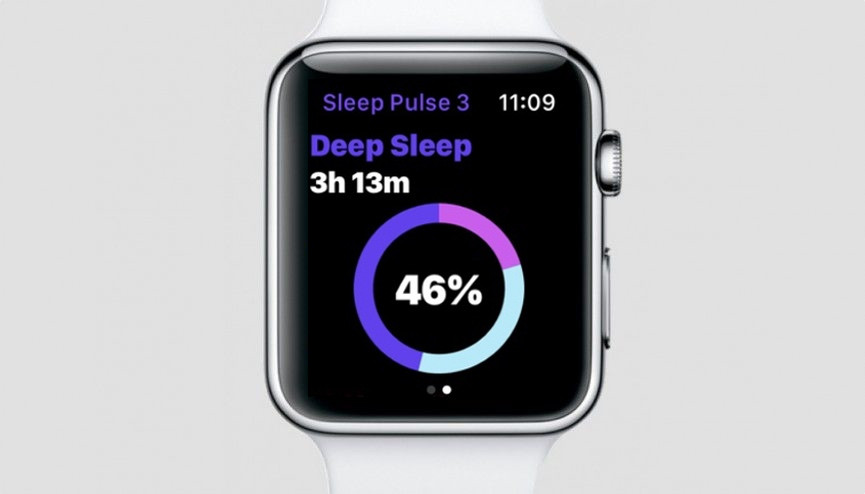
Sleep Pulse 3 is a fully-featured standalone sleep app for your Apple Watch that does most of the work itself.
It'll track your heart rate and motion, and there's a sleep view you can take a look at when you randomly wake up in the middle of the night. This will show you your resting heart rate, as well as how long you've been sleeping.
There are also ways to track naps and record sleep talk. Best of all, all the sleep analysis is done right on the Watch, not on your phone.
It's also been updated to better work with the latest Apple Watch models, too, so it's better optimized for those bigger screens and pairs with Apple's Infograph and Infograph Modular watch faces, letting you see recent sleep data from your watch face.
NapBot
Free ($9.99/£9.99 premium): Download NapBot
Wareable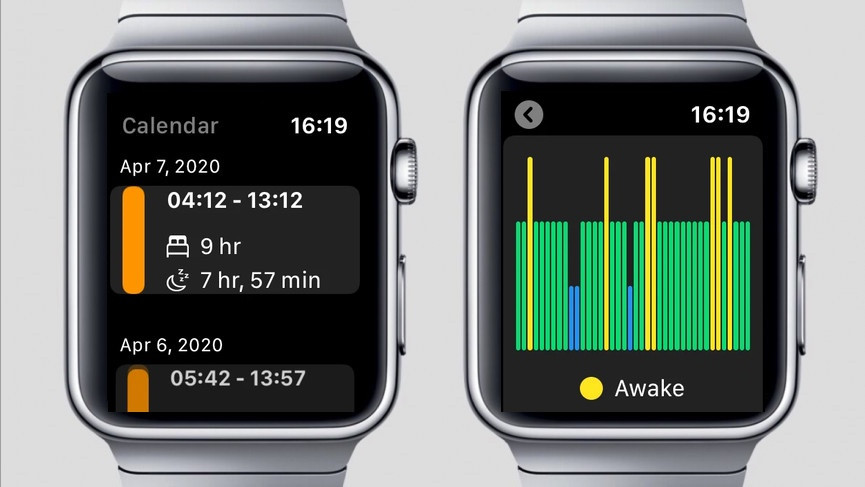
NapBot is an Apple Watch sleep app that will automatically track that sleep time and relies on artificial intelligence to help you make better sense of that slumber.
The non-pro version will let you see light and deep sleep stages as well as heart rate during sleep and can even examine noise in your sleeping environment to help better understand how it might be impacting sleep quality.
If you go Pro, you'll be able to see richer sleep history and trends while the latest version of the app now supports the ability to view sleep in calendar form and adjust sleep goals without reaching for your iPhone.
As the name also suggests it can be used when you're drifting off for a mid-afternoon power nap before you jump back into work mode.
And the latest update has added breathing quality tracking, which can point to signs of sleep apnea.
How we test
